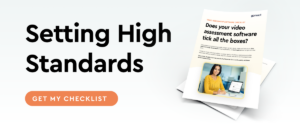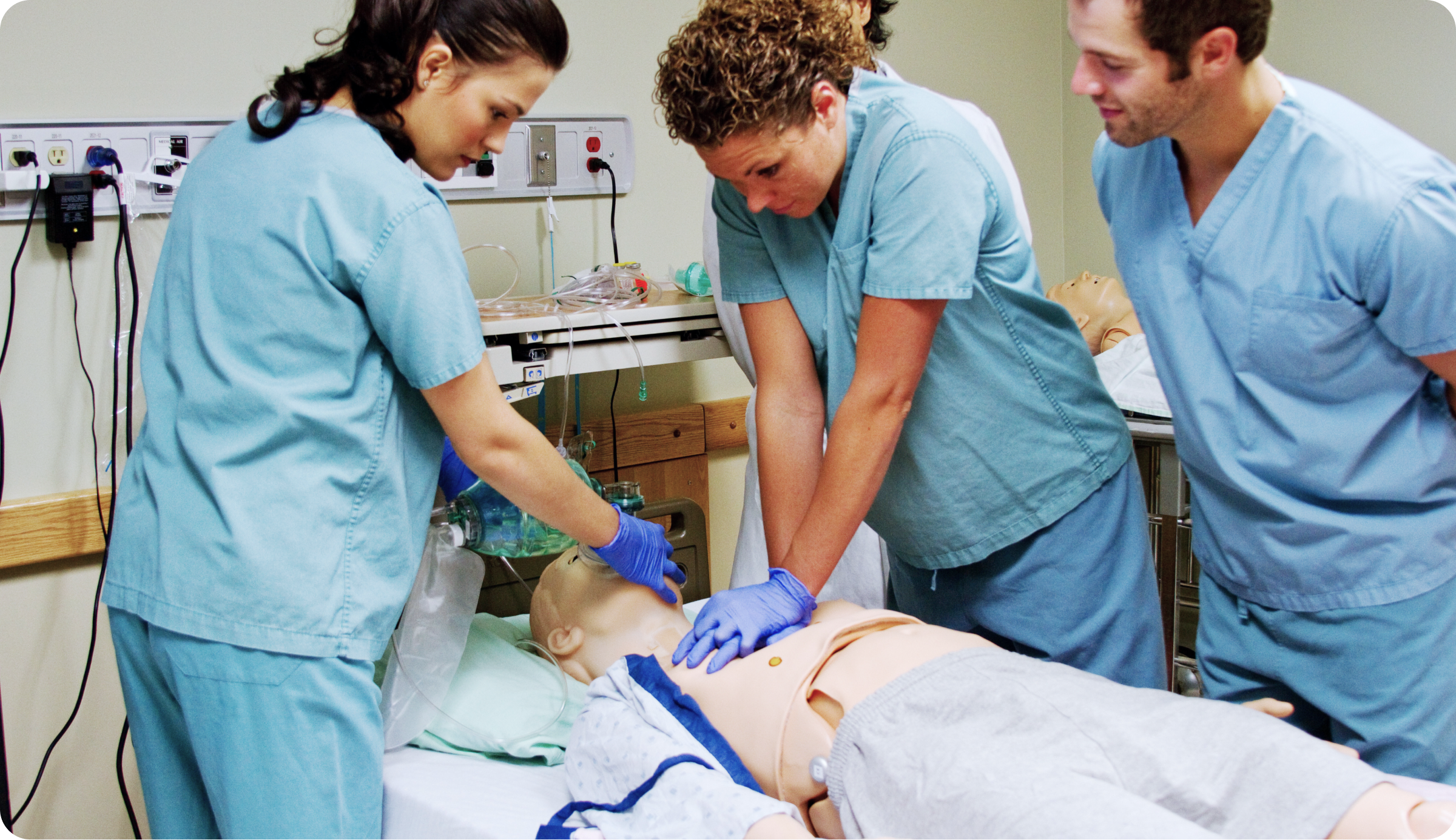Programs are retiring their nursing assessment pencils and clipboards. These days, as a recent report shows, nurse educators use video more and more to record, score, and give feedback for skills check-offs.
Based on this trend, it’s likely your program is looking to use video or already uses video for nursing assessments. But are you using the best video tool out there?
You may have snatched the nearest video floatation device during the pandemic, but does it have LMS integrations and state-of-the-art feedback features?
This article will do two things:
- Show you all the ways video can enhance nursing assessments.
- Provide the resources and know-how to help you find the right video tool for your nursing program.
Your nursing program deserves the best, so let’s get started.

What Video Can Do for Nursing Assessments
During the pandemic, many nurse educators used video tools to record and give feedback on nursing skills check-offs for their remote students. What nurse educators and programs quickly discovered is that video provides more benefits than they expected—pandemic or no pandemic.
If your current video assessment tool just helps you navigate the pandemic, you’re missing out. Here are some of the benefits you can expect with the right video tool.
Save Faculty Time
With the right video assessment tool, faculty can shave hours off skills validation. Dr. Dara Murray, Assistant Professor of Nursing at the University of West Alabama, said her program saved up to 9 hours per skill with their video assessment tool, GoReact.
Enhance Feedback
Video assessment tools can offer incredible feedback features, like multimodal feedback (e.g., written feedback, video-recorded feedback, or audio-recorded feedback), plus time-coded feedback.
Time-coded feedback is a favorite student feature: when instructors or peers evaluate nursing assessments, their feedback is automatically time-coded to precise moments in the student videos. As you can imagine, it makes feedback more contextual, specific, and personal.
Improve Clinical Judgment
Capturing students demonstrating hard skills during validation is important, but so is clinical judgment. As the NGN (Next Generation NCLEX) focuses on clinical judgment, video assessment can help you focus on critical thinking too. A good video assessment tool spurs critical thinking through experiential learning and reflective practice, and by supporting evidence-based strategies and curriculum.
Get a free guide to learn how video assessment increases new nurses’ clinical judgment.

How To Find the Right Video Tool
Now you know the benefits, let’s make sure you have the tools and know-how to find the right tool to enjoy these benefits. To find the best video assessment tool for your nursing program, start by using this free video assessment software checklist.
The checklist includes 25 boxes your video assessment tool should check off, and it’s a great resource to compare or assess any video tool you’re using or thinking about using for nursing skills check-offs.
You’ll notice that the checklist is broken up into three sections—these are the three “must-haves.” Whether or not you use the checklist, ensure your video assessment tool addresses the three core items: reliability, flexibility, and security.

1. Reliability & Objectivity
Why is it important?
By definition, an assessment tool must provide reliable and objective assessments. Any assessment tool worth its price tag should help your faculty:
- Improve program consistency.
- Minimize human errors.
- Protect against bias and subjectivity.
As a medium, video itself helps minimize errors, bias, and subjectivity. No matter how you capture it, a video of a student performing a head-to-toe provides visible, objective evidence of skill competency. So what else do you need to look for in a video tool?
An excellent video tool goes beyond the video footage itself with features that enhance consistency and analytics. For example, with a rubric feature, your video assessment tool can enhance inter-rater reliability across your department for med administration assessments. This is just an example, there are a lot of different features to consider.
For more reliability and objectivity boxes to check off, see the free checklist.

2. Flexibility
Why is it important?
Following the pandemic, The Chronicle of Higher Education and other trend watchers in higher ed predict a new—flexible—normal. While students don’t seem enamored with strictly online learning, they do love the flexibility online learning offers. That’s why many institutions predict an increase in hybrid learning environments and tools.
This means your video assessment tool must bend, twist, and go with the flow of higher education trends. With the right flexibility features, your video assessment tool can help your program with more than nursing assessments—you can use it to enhance didactic classes, in the sim lab, or clinical practice.
A good place to start is your video tool’s mobile experience, LMS integrations, capabilities for synchronous and asynchronous feedback, and much more.
For more flexibility boxes to check off, see the free checklist.

3. Security
Why is it important?
With the shift to flexible, remote, online learning comes heightened security concerns. Security was an issue before the pandemic, and according to Comparitech, higher education accounted for three-quarters of the 1,327 data breaches in education from 2005 to July 2020.
Now that the pandemic has increased online and remote learning, a report by Checkpoint shows education is the fastest growing sector for hackers, phishing, etc. With a target on our backs, your video assessment tool must protect student videos, grades, and feedback. This means multifactor authentication, compliance with PHI, FERPA, COPPA, and CCA standards, and more.
For more security boxes to check off, see the free checklist.
Get Your Free Video Assessment Checklist
There you have it: objectivity, flexibility, security. These are the three must-haves when it comes to finding the right video assessment software for nursing assessments. And when you pick the best video tool, it can save your faculty time, enhance feedback, and improve clinical judgment.
So what are you waiting for? Your nursing program deserves the best. To find it, download your free checklist.
Find out about video assessment’s important role in the future of higher ed technology.












